|
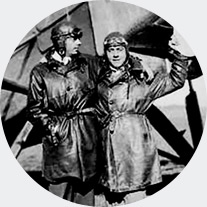 At the dawn of aviation, most of pilots used for navigation pocket watches, wrist watches because they are designed specifically for the flight were still very rare. The first wrist watch for men aviation «Pilot's Watches Classics», built by the Swiss company IWC in 1936, had a solid sapphire crystal, rotating bezel with indexes to instantly clear guidance and antimagnetic descent with vysokontrastnymi luminous hands and numerals. Since 1940, the IWC started producing 52 hours of TSC Big Pilot in accordance with the needs of military specifications. A characteristic feature of these timepieces is proprietary mechanism IWC with a large second hand. With a diameter of 55 millimeters and weighing 183 grams, it was the largest wristwatch ever built by IWC. Hours At the dawn of aviation, most of pilots used for navigation pocket watches, wrist watches because they are designed specifically for the flight were still very rare. The first wrist watch for men aviation «Pilot's Watches Classics», built by the Swiss company IWC in 1936, had a solid sapphire crystal, rotating bezel with indexes to instantly clear guidance and antimagnetic descent with vysokontrastnymi luminous hands and numerals. Since 1940, the IWC started producing 52 hours of TSC Big Pilot in accordance with the needs of military specifications. A characteristic feature of these timepieces is proprietary mechanism IWC with a large second hand. With a diameter of 55 millimeters and weighing 183 grams, it was the largest wristwatch ever built by IWC. Hours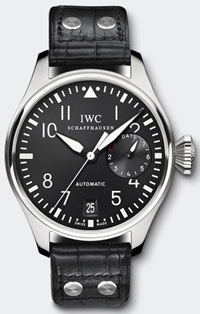 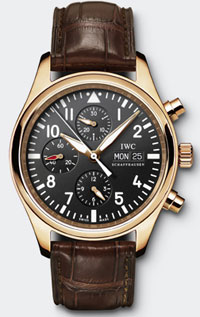 meet the needs of the military and to meet all the requirements of the chronometer. meet the needs of the military and to meet all the requirements of the chronometer.
The other "civic" model of hours Pilot's Watch Chronograph from IWC has also been very successful. Demand for the pilot's IWC watches Series Pilot's Watch Chronograph was constant, as they were considered reliable from the beginning Start them in a series in the 1930s, not least because of the legendary and highly reliable model aircraft Ju 52 has paved the way for safe air travel . Aircraft owes its excellent reputation, thanks to the basics of thinking engineers designed the J 52: reduction in size and easier to make the plane easier and easier maintenance, and in addition, to maintain a high level of reliability. All these features have been used swiss company IWC in the process of designing a series of male watches Pilot's Watch Chronograph, which were all pilots J 52. A characteristic feature of these watches, the design of which borrowed much from the aircraft, was a large enclosure with an upgraded dial.
 .jpg) Focusing on the most appropriate instruments is also reflected in the cockpit. Pilots had to keep track of all the testimony of more devices. For them it was vitally important to have well-organized cockpit (cockpit) with as clear scale devices in even the most challenging lighting conditions. Ju 52 dials were mostly round, with bright arrows on a black background. It is this "instrumentny glance" impact on the design decisions that guided in the IWC, when they created the Big Pilot's Watch and the Mark 11 in 1948. Mark 11 model manufactured until 1984 and is the most famous aviation chronometers IWC. This was one of the very first hours that meet the stringent criteria required for a pilot chronometer. The clock mechanism was put in an extra soft iron inner case that protected the watch parts from the harmful effects of the magnetic field. The first copies of Big Pilot's Watch and the Mark 11 and work well today, taking advantage of a great demand among collectors. Focusing on the most appropriate instruments is also reflected in the cockpit. Pilots had to keep track of all the testimony of more devices. For them it was vitally important to have well-organized cockpit (cockpit) with as clear scale devices in even the most challenging lighting conditions. Ju 52 dials were mostly round, with bright arrows on a black background. It is this "instrumentny glance" impact on the design decisions that guided in the IWC, when they created the Big Pilot's Watch and the Mark 11 in 1948. Mark 11 model manufactured until 1984 and is the most famous aviation chronometers IWC. This was one of the very first hours that meet the stringent criteria required for a pilot chronometer. The clock mechanism was put in an extra soft iron inner case that protected the watch parts from the harmful effects of the magnetic field. The first copies of Big Pilot's Watch and the Mark 11 and work well today, taking advantage of a great demand among collectors.
In 1988, the tradition of hours for pilots continued a series of «Pilot's Chronograph». Following them in 1992, the IWC produces watches with double chronograph and automatic winding movement. In 1994, deciding to repeat the success of the Mark 11, a full-scale production is Mark XII. As expected, the clock had an automatic mechanism and date window. In 1998 came Pilot's Watch UTC, where the change in the date and time could change one crown. A year later, the new Mark XV became the undisputed winner in a hard test aircraft hours among the ten best chronometer watch companies. In 2002, the IWC has revived the series Big Pilot's Watch with seven-day power reserve indicator and balance energy.
In 2008, in recognition of perhaps the most powerful in the world of interpersonal relationships, IWC introduced a special edition - «Pilot's Watches for Father and Son» (pilot watches the Father and Son). The set consists of the duo hours with shells made of platinum and stainless steel.
.jpg) .jpg) The writer and pilot Antoine The writer and pilot Antoine .jpg) Saint-Exupery was a legend during his lifetime. The whole world was fascinated by his books, translated into over 50 languages, among them world-famous fairy tale story "Le Petit Prince" ("The Little Prince"). But Saint-Exupery was also an adventurer. The life of Saint-Exupery, after his training as a pilot was under the influence of passion for flight. In 1926, he was a pilot Aeropostale, in 1927, the pilot cargo plane to Toulouse-Casablanca-Dakar, and in 1929 director of the airline in Buenos Aires. During his attempt to beat the distance record in the way of Paris to Saigon in 1935, Saint-Exupery made an emergency landing in the desert of Egypt, and was saved at the last minute. After the Second World War, Saint-Exupery was attached to a reconnaissance squadron in Arras. July 31, 1944, "Saint-Ex," as he affectionately referred to as the fans, climbed into the cockpit of his Lightning P-38 to perform a reconnaissance mission over occupied France. He never returned. In 2003, the wreckage of his Lightning were raised from the bottom of the Mediterranean near Marseilles. In memory of this brave pilot IWC has released a series of aviation chronometers «Big Pilot's Watch Edition Antoine de Saint Exupéry». Saint-Exupery was a legend during his lifetime. The whole world was fascinated by his books, translated into over 50 languages, among them world-famous fairy tale story "Le Petit Prince" ("The Little Prince"). But Saint-Exupery was also an adventurer. The life of Saint-Exupery, after his training as a pilot was under the influence of passion for flight. In 1926, he was a pilot Aeropostale, in 1927, the pilot cargo plane to Toulouse-Casablanca-Dakar, and in 1929 director of the airline in Buenos Aires. During his attempt to beat the distance record in the way of Paris to Saigon in 1935, Saint-Exupery made an emergency landing in the desert of Egypt, and was saved at the last minute. After the Second World War, Saint-Exupery was attached to a reconnaissance squadron in Arras. July 31, 1944, "Saint-Ex," as he affectionately referred to as the fans, climbed into the cockpit of his Lightning P-38 to perform a reconnaissance mission over occupied France. He never returned. In 2003, the wreckage of his Lightning were raised from the bottom of the Mediterranean near Marseilles. In memory of this brave pilot IWC has released a series of aviation chronometers «Big Pilot's Watch Edition Antoine de Saint Exupéry».
If you've always wanted to serve in the U.S. Navy, the Swiss watchmaker IWC Schaffhausen will now perform at least some of your dreams. Like most military style watches, IWC TOP GUN also comes with a black body, although this time it is not PVD, and scratch-resistant ceramic coating in combination with the protective portions and the body made of lightweight and durable titanium. Bolted on the back cover of the titanium TOP GUN logo U.S. Navy.
Aviation chronometers Pilot's Watches Classics have come a long way of development, as today is not only high-precision Swiss timing tool, but also the embodiment of aviation history.
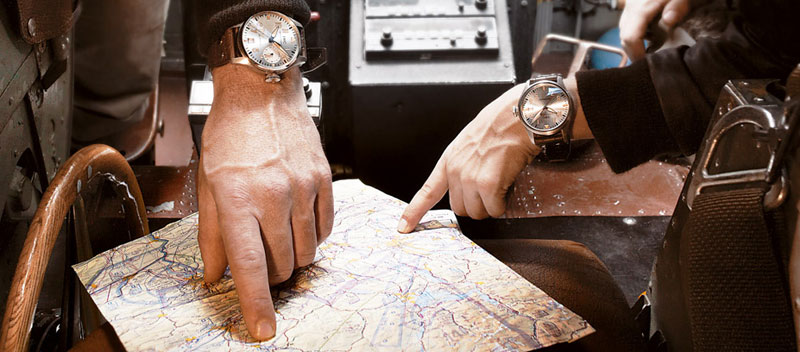
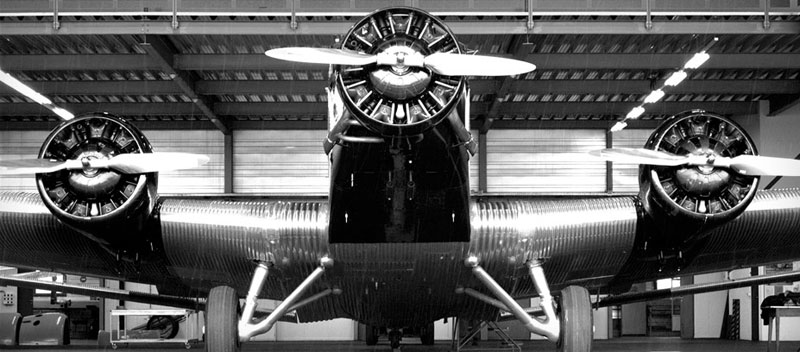
|
